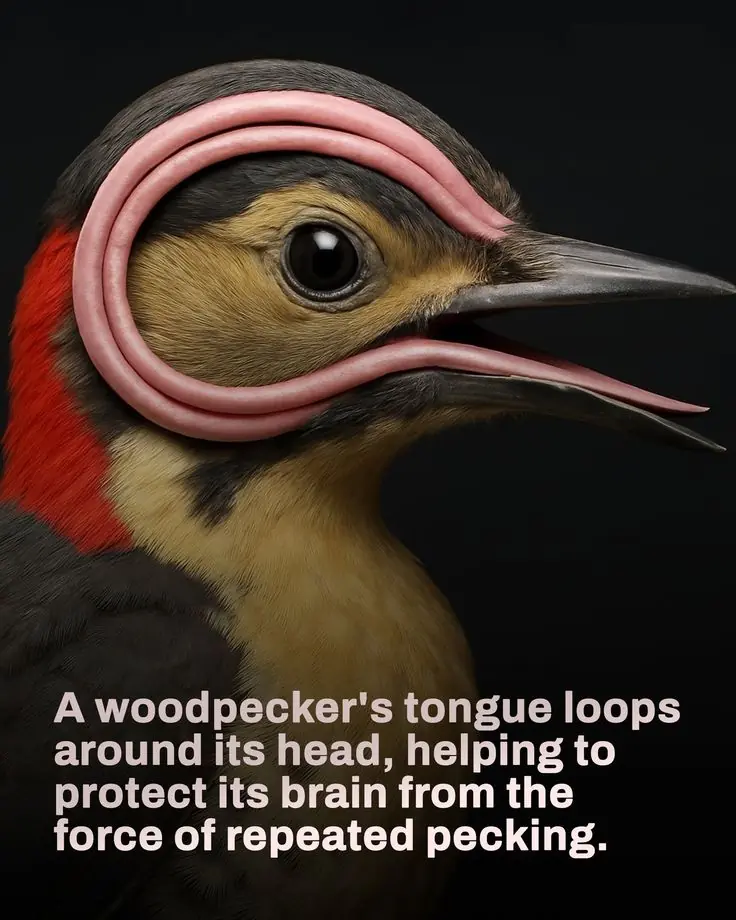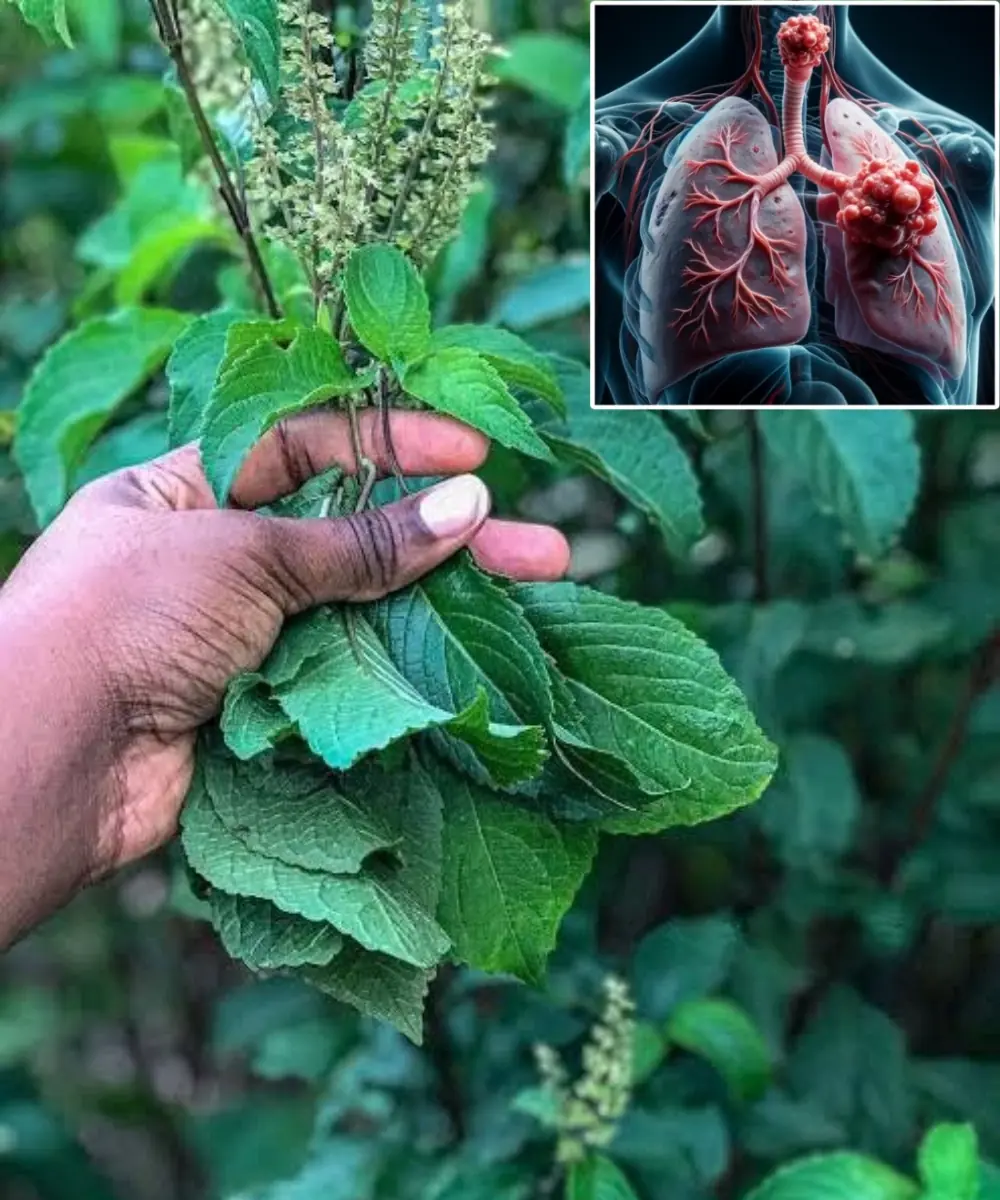
Nature’s Engineering Marvel: The Woodpecker’s Incredible Built-In Safety Mechanism

In the world of birds, few species capture the imagination of scientists and nature lovers quite like the woodpecker. At first glance, its most noticeable trait is its tireless drumming on tree trunks. But beneath that rhythmic tapping lies one of nature’s most astonishing adaptations — a tongue so long and specialized that it doesn’t just fit inside the bird’s beak; it wraps around the entire back of its skull.
Yes, you read that correctly. The woodpecker’s tongue begins at the base of its mouth, winds behind the head, threads through specialized canals near the skull, passes over the top between the skin and bone, and anchors near the right eye socket or even inside the nasal cavity. This bizarre yet brilliant anatomical design is no accident — it’s a product of millions of years of evolution.
The Hidden Structure: The Hyoid Apparatus
The secret to this avian marvel is the hyoid apparatus, a flexible system of bones, cartilage, and muscles that not only supports the tongue but also allows it to extend to incredible lengths. In some woodpecker species, the tongue can be up to three times the length of the beak. When not in use, the hyoid coils the tongue like a spring, keeping it tucked neatly around the head.
This unique design serves two primary purposes:
-
Foraging efficiency – The tongue can shoot forward with lightning speed, perfect for reaching deep into crevices in bark where insects hide. Depending on the species, the tip may be barbed like a spear to impale prey, or coated in sticky saliva to snag ants and beetle larvae.
-
Shock absorption – The coiled tongue also acts as a natural seatbelt for the brain, cushioning it from the tremendous forces generated by repeated pecking — up to 1,200 Gs of force per strike, more than 100 times what a human brain could withstand.
Built for a Grueling Job
A woodpecker’s daily life is a test of durability. They can hammer at trees up to 20 times per second, totaling more than 10,000 pecks a day. Without its shock-absorbing anatomy, the bird would quickly suffer brain damage. But the combination of its reinforced skull structure, spongy bone, and wrapping tongue disperses impact forces so effectively that scientists are studying it to design better helmets, car safety systems, and impact-resistant technology.
A Precision Tool for Survival
The tongue’s versatility makes it more than just a feeding tool. Some woodpecker species can probe the soil for ants, flick their tongues rapidly to snare termites, or even use them to test the texture of wood before drilling. Each behavior is a testament to how evolution has fine-tuned this bird’s anatomy for survival in a niche environment.
Inspiration for Human Innovation
The woodpecker has inspired researchers in biomimicry — the practice of using nature’s solutions to solve human problems. Engineers have studied its skull and tongue design to improve shock-proof materials, sports helmets, and even spacecraft landing gear. NASA has explored the woodpecker’s anatomy as a model for reducing vibration damage in sensitive instruments.
A Question That Lingers
For many, the woodpecker’s tongue isn’t just an interesting quirk — it’s a mystery that sparks bigger questions about the complexity of life. How did such an intricate system evolve? How did multiple traits — a reinforced skull, specialized beak, shock-absorbing tongue, and unique brain structure — all develop in harmony for one purpose?
Whatever the answers, one thing is certain: the woodpecker is a living example of how breathtakingly creative nature can be. Next time you hear that rapid tap-tap-tap in the woods, remember that behind it lies one of the most extraordinary pieces of biological engineering ever discovered.
News in the same category


12 Signs She Has a Lot of Experience with Men

Why Natural Beauty Deserves More Appreciation

Things that make men instantly unattractive

When a Woman Stops Loving: Recognizing the Signs and Taking Care of Yourself

The Romantic Rituals of Seahorses: A Morning Dance of Devotion

Why You Shouldn’t Pour Hot Water Into the Kitchen Sink

The Gentle Side of the King: How Lions Pretend to Be Hurt to Teach and Empower Their Cubs

Why Do Humans Kiss, and What Happens When We Do It?

Discover Love in the Little Things: Everyday Connections

The shape of your fingertips reveal your true personality

The Secret of Our Hands: Does It Reveal Wealth or Poverty?

The reason dogs often chase people

The Little Bow on Women’s Panties: More Than Just a Pretty Detail

The Meaning of the Main Lines of the Hand

Baby Gorilla Skeletons Show Striking Similarities to Human Infants, Scientists Explain

What’s the Purpose of That Tiny Hole in a Safety Pin?

Pick a nut and uncover if you’re lazy or a workaholic

10 Rude Habits That Could Actually Be Signs of Intelligence

Most People Don’t Realize What a Mouth Piercing Means … Check 1st comment
News Post

WHAT HAPPENS WHEN WE TONGUE KISS…See more

Nature’s Secret: 4 Healing Leaves That Support Metabolism, Immunity & Circulation Naturally

Don’t Drink Coconut Water Before You Know These 11 Secrets!

Pumpkin Seed Milk — The Natural Parasite Cleanser

Fast Rice Water Trick for a Brighter Smile

Morning Drink to Revive Your Kidneys Fast

The Onion Recipe That Could Transform Your Blood Sugar, Support Cleaner Arteries, and Protect Your Heart!

Top 4 Fruits That Help Your Kidneys Flush Out Toxins While You Sleep

Ginger, Clove, and Honey: The Natural Trio Your Body Will Thank You For

Heal 15 Years of Joint Pain Naturally with Turmeric and Honey Tea

This Juice Revived My Grandma’s Energy — Say Goodbye to Fatigue and Body Pain with This Natural Recipe

The Benefits of Eating 2 Boiled Eggs Every Morning: Transform Your Health!

If Your Kidneys Are in Danger, Your Body Will Send You These 8 Signals — Don’t Ignore Them

The Surprising Effects of Avocado on Your Heart and Brain

Ways to Get Over a Man Who Didn’t Value You

I’m 66 but Look 36 — My Secret? Aloe Vera & Ginger for Firm, Smooth Skin

How to Make Okra Water to Treat 17 Health Problems Naturally

Banana and Egg Mask to Look Younger Even in Your 80s

Scent Leaf Secrets Unveiled: 10 Surprising Health Benefits of This Miracle Herb
